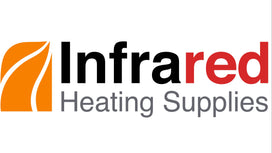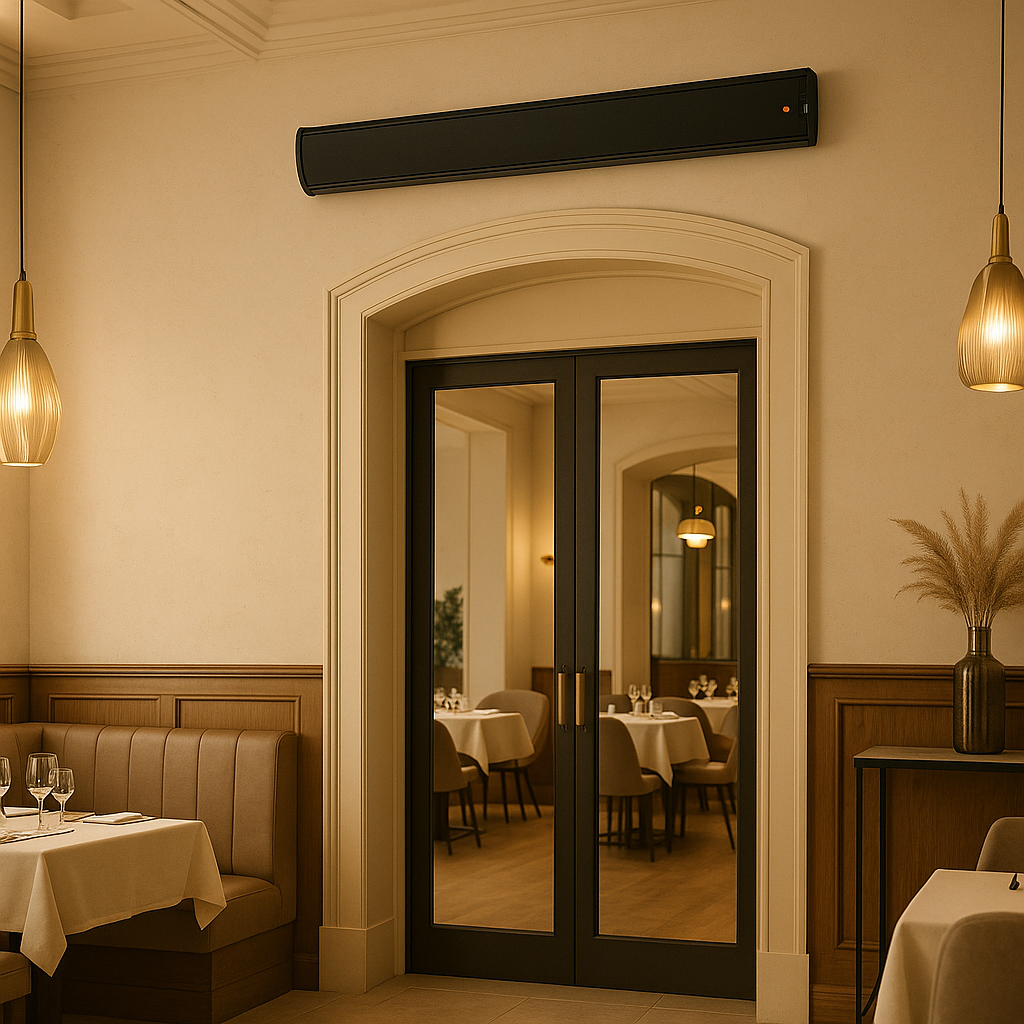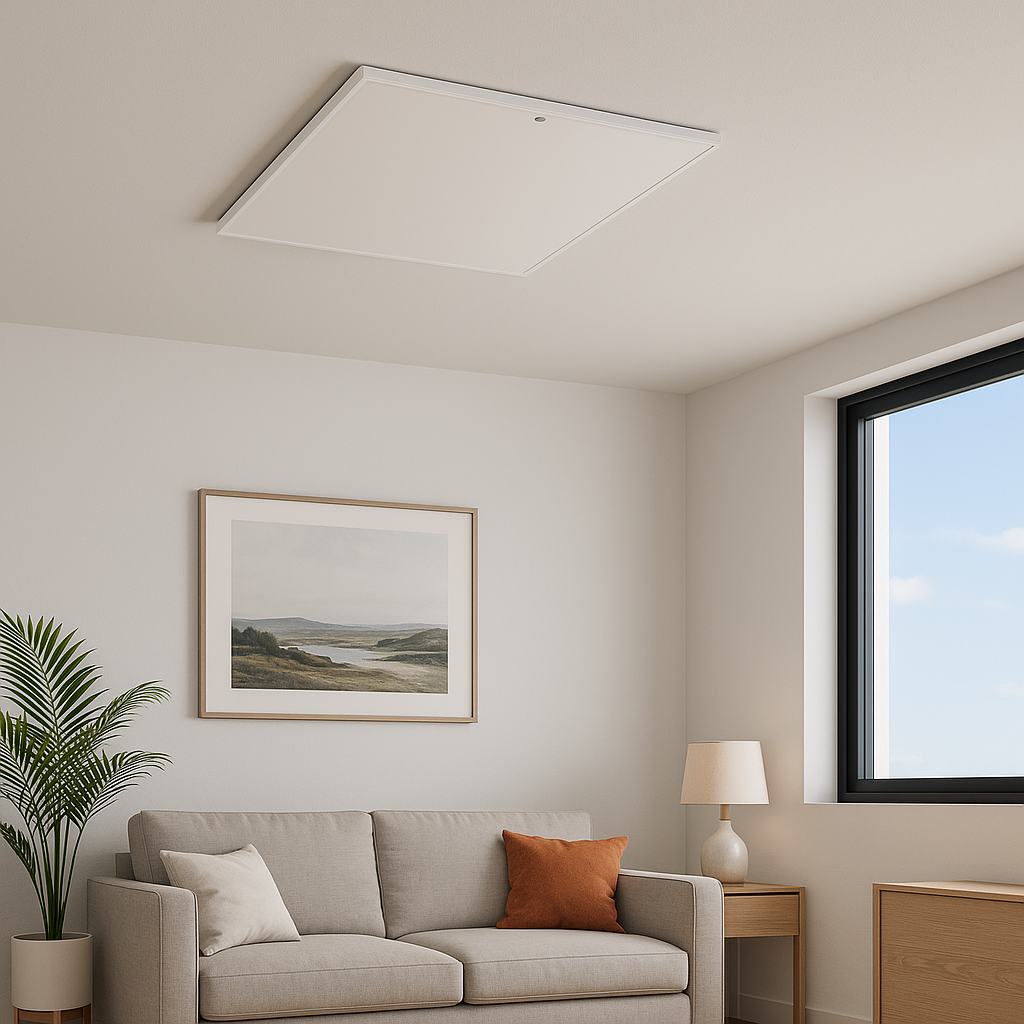
Infrared Heating for Care Homes & Social Housing
For housing associations and care providers, delivering safe, reliable and energy-efficient heating is a constant challenge. Traditional systems like gas boilers and electric convection heaters are expensive to run, costly to maintain, and often struggle to provide consistent comfort across varied property types. Infrared heating offers a future-proof alternative, combining cost savings, low maintenance, and improved occupant wellbeing.
Unlike convection systems that rely on heating the air, infrared panels work by emitting gentle radiant heat that warms walls, furniture, and people directly. This results in a more even temperature across the room, reduces heat loss through draughts, and eliminates cold spots perfect for residential environments where consistent comfort is key.
In care homes, where many residents are elderly or vulnerable, maintaining a steady ambient temperature is essential. Infrared heating provides silent, draught-free warmth without blowing air or circulating dust, which helps maintain good air quality. It also reduces moisture and condensation, helping to prevent mould growth, a major concern in older buildings or poorly ventilated rooms.
For housing associations, cost is often a major factor especially with laws coming in place to build greener and more energy efficient homes. Infrared panels are inexpensive to install, require no pipework or ongoing servicing, and can help reduce electricity bills by up to 50 percent when paired with smart controls. Each unit can be wall or ceiling mounted, making them tamper-resistant and ideal for high-risk environments. This also frees up floor space, important in compact homes or supported accommodation settings.
Because infrared panels heat the room fabric rather than just the air, buildings retain warmth more effectively. This helps residents stay comfortable even after the heater is turned off, reducing total run time and energy consumption. The long lifespan of the panels (typically 100,000 hours) means minimal intervention over decades - further reducing reactive maintenance costs.
Infrared also integrates well with modern building upgrades. Whether you’re working on a retrofit scheme or new build housing, panels can be wired in room by room and zoned for maximum control. With smart thermostats, individual tenants can manage their heating without affecting others, giving them autonomy while helping meet your carbon reduction goals.
Learn more about the core technology on our Infrared Heating Guide page, and discover how it compares to older systems on our Infrared vs Traditional Heating overview.
Recommended Products for Housing Associations & Council Houses
Why Choose Infrared Heating Panels?

Energy Efficient
Save up to 60% on your heating bills compared to traditional heating methods.

Health
Reduces dust circulation and improves air quality — great for allergies.

Enhanced Comfort
Even heat distribution with no cold spots, just warm, balanced spaces.

Zoned Heating
Heat only the rooms you use, increasing efficiency and reducing waste.

Quick Instant Heat
Feel warmth almost immediately — perfect for cold mornings and rooms.

Low Maintenance
No moving parts means less to go wrong. Just install and enjoy.

Silent Operation
No fans or noise. Enjoy uninterrupted warmth in peace and quiet.

Damp & Mould Prevention
Reduces condensation and moisture by heating surfaces evenly.
Why Infrared Heating Is Ideal for Care & Social Housing
- Quick and flexible installation — no wet trades or disruption, perfect for retrofits and large estate upgrades.
- Ceiling-mountable for safety — avoids tampering, makes units ideal for dementia care or supported living environments.
- Anti-ligature and vandal-resistant options — available for high-risk or shared settings.
- Reduces mould and damp — ideal for older housing stock or low-ventilation properties.
- Individual room control — tenants can heat only the spaces they use, improving energy budgeting and autonomy.
- Compatible with renewables — infrared works perfectly alongside solar PV and battery storage setups.
- Improved air quality — no blown air, helping reduce asthma, allergies and airborne dust issues.
- Supports decarbonisation plans — reduces reliance on gas and helps meet sustainability targets.
Frequently Asked Questions – Care Homes & Social Housing
Are infrared panels safe for vulnerable residents?
Yes. Panels are safe to touch, can be ceiling-mounted to prevent interference, and offer silent operation with no moving parts or emissions.
Can each room have its own heating control?
Absolutely. Each panel can be linked to a dedicated thermostat, giving residents full control of their own heating without affecting shared systems.
Is this cheaper than storage or gas heating?
Yes. Infrared panels are highly efficient and offer up to 50% energy savings compared to outdated heating methods — especially when paired with solar or low-rate tariffs.
Can infrared work in old housing stock?
Yes. It’s particularly effective in older homes where damp and poor insulation are issues — as it heats surfaces and walls rather than air alone.
Speak to Our Technical Team
If you manage care homes or council housing and want to cut heating costs, reduce emissions, or solve damp and mould problems — we can help.
Call us on 01204 520544 or email info@infraredheatingsupplies.com.
Visit our FAQs or Contact Page for more details, or explore how infrared works alongside Solar PV systems.









